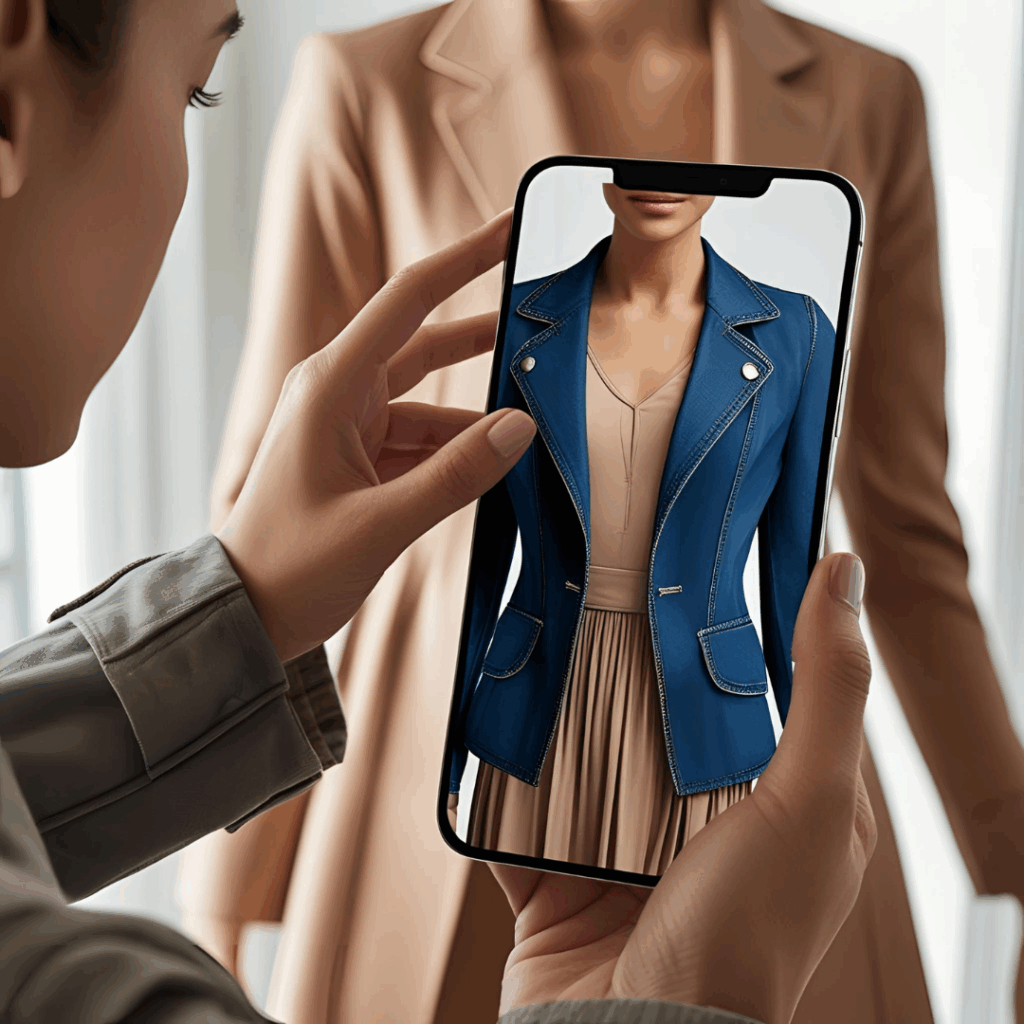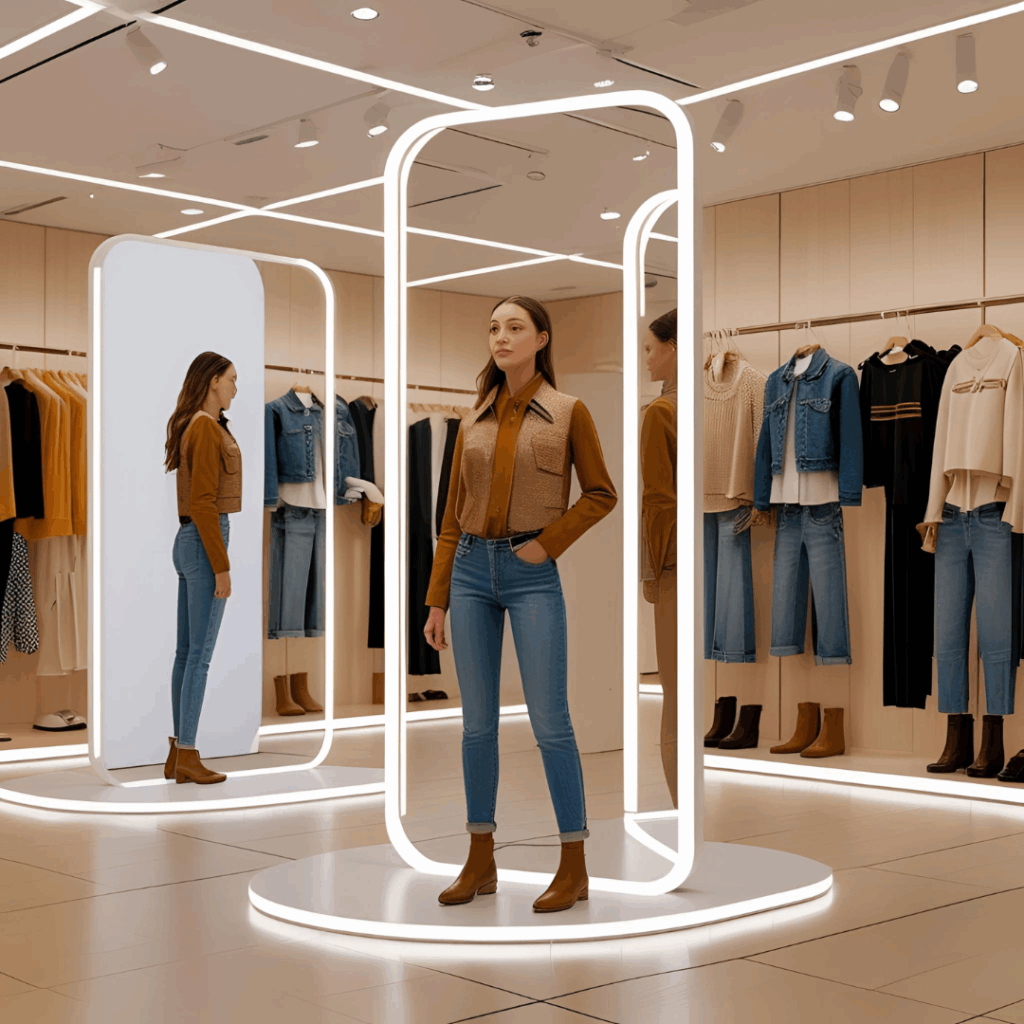The fashion industry is experiencing a remarkable technological transformation, and one of the key innovations driving this change is augmented reality (AR). What was once a futuristic idea has now become a practical reality that is reshaping the way consumers shop for clothes. With AR, trying on clothes virtually is no longer science fiction—it’s happening today, changing the fashion retail landscape and enhancing consumer experience in unprecedented ways.
What is Augmented Reality (AR) in Fashion?
Augmented reality combines the physical world with computer-generated digital content. Unlike virtual reality (VR), which immerses you completely in a digital environment, AR overlays digital elements on your real-world view through devices like smartphones, tablets, or smart glasses.
In the context of fashion, AR allows users to try on clothes, accessories, shoes, and even makeup virtually. By simply pointing a device’s camera at themselves or their surroundings, consumers can see how garments would look and fit on their bodies or in their homes, without the need for physical samples or fitting rooms.
This technology is rapidly becoming an integral part of the shopping experience, bridging the gap between online convenience and the tactile nature of in-store shopping.
How Does AR Work for Virtual Try-Ons?
The magic behind AR try-ons involves a combination of several advanced technologies:
- 3D body scanning and measurement: The AR app scans your body shape and size using the camera, creating a digital avatar or mapping your dimensions to fit virtual clothes accurately.
- Motion tracking: The app tracks your movements so the virtual clothes move naturally as you turn, walk, or pose.
- Realistic rendering: High-quality graphics and textures ensure the garments look lifelike in color, fabric, and drape.
- AI and machine learning: Some apps use AI to recommend sizes or styles based on your past preferences and measurements.
Through these technologies, AR apps create a personalized fitting room experience that adjusts in real time, giving consumers confidence about how items will look and fit before buying.

Popular AR Fashion Apps and Platforms
Several fashion brands and tech companies have embraced AR to enhance the shopping experience. Here are some of the leaders in the space:
- Zara and H&M AR Shopping Experiences: These brands have incorporated AR into physical stores and online, allowing users to point their phones at specific areas or windows to see models showcasing the latest collections in 3D.
- Snapchat Try-On Lenses: Snapchat partners with fashion and beauty brands to offer AR filters that let users try on virtual makeup, sunglasses, shoes, and even clothing.
- Wannaby (Wanna Kicks): This app specializes in virtual shoe try-ons, letting users see how different sneakers fit and look from multiple angles.
- Amazon AR View and Shopify AR: E-commerce platforms are integrating AR to let shoppers preview products, including clothing and accessories, in their own space before purchasing.
- Zero10: A digital fashion platform allowing users to design, try on, and share virtual clothing, supporting the emerging digital fashion economy.
Benefits of Using AR for Virtual Clothing Try-Ons
Adopting AR technology in fashion brings several notable advantages, both for consumers and brands:
1. Convenience and Time-Saving
No more waiting in long dressing room lines or returning ill-fitting clothes ordered online. With AR, you can try on multiple outfits instantly from the comfort of your home, office, or even while commuting.
2. Reduced Returns and Environmental Impact
Online shopping returns are a major source of waste and carbon emissions due to shipping and discarded packaging. AR helps reduce these returns by giving shoppers a better sense of fit and style before purchase, promoting more sustainable consumption.
3. Increased Confidence in Purchases
Trying on virtual clothes helps consumers feel more certain about their choices, reducing anxiety over size and style. This leads to higher customer satisfaction and loyalty.
4. Enhanced Engagement and Brand Experience
Brands can offer immersive experiences through AR that turn shopping into a fun, interactive activity. This builds emotional connections and encourages social sharing.
5. Personalization and Style Exploration
Many AR apps incorporate AI to recommend clothes based on body type, personal taste, and trending styles. Shoppers can experiment with looks they might not have considered otherwise.

Challenges and Limitations
Despite the promise of AR in fashion, the technology is not without challenges:
- Device Compatibility: Not all smartphones or browsers support advanced AR features, limiting accessibility for some users.
- Accuracy Concerns: Although AR technology is improving rapidly, virtual garments may still differ slightly in color, fit, or texture compared to real life.
- User Adoption: Some consumers may be hesitant or unfamiliar with AR, requiring education and user-friendly interfaces.
- Privacy and Data Security: AR apps often require body scanning and personal data. Ensuring this information is stored securely and transparently is essential to gain user trust.
- Costs for Brands: Developing high-quality AR experiences requires investment in technology and content creation, which may be a barrier for smaller brands.
The Future of AR in Fashion
Augmented reality is poised to become a cornerstone of fashion retail. As AR technology advances, we can expect:
- More sophisticated virtual try-ons with hyper-realistic textures, fabric physics, and even tactile feedback via haptic devices.
- Integration with the metaverse and digital fashion: Avatars in virtual worlds will wear digitally-created garments purchased and traded on blockchain platforms.
- Virtual fashion shows and live AR experiences blending physical and digital elements.
- Smart mirrors in stores that offer real-time styling advice and product info.
- Expanded uses beyond apparel including jewelry, eyewear, and even virtual tattoos or makeup.
AR will make fashion more interactive, sustainable, and inclusive, inviting consumers to engage in new creative and conscious ways.
How to Get Started with AR Fashion Try-Ons
If you’re curious about exploring AR fashion, here are some tips:
- Download popular AR try-on apps like Wanna Kicks, Snapchat’s try-on lenses, or brand-specific apps.
- Use smartphones with AR capabilities (most modern iOS and Android devices support ARKit or ARCore).
- Scan your body or input measurements carefully for the best fit simulation.
- Experiment with different styles and brands to find what works best for you.
- Stay updated with emerging AR fashion innovations by following fashion-tech news.
Augmented reality is transforming fashion from a tactile, sometimes frustrating experience into an innovative, interactive journey. By bridging physical and digital worlds, AR offers shoppers unprecedented convenience, personalization, and sustainability benefits. As technology evolves, virtual try-ons will become an indispensable part of how we discover, experience, and express fashion — reshaping the industry and empowering consumers worldwide.







